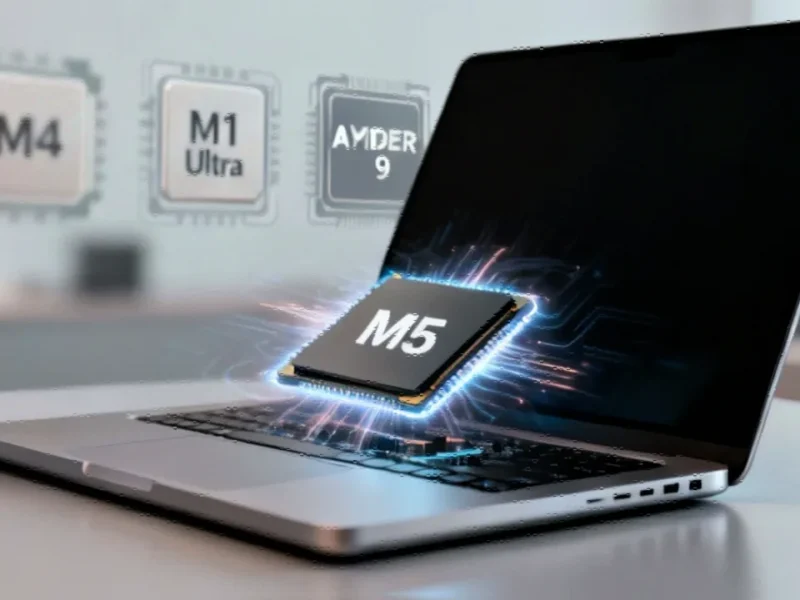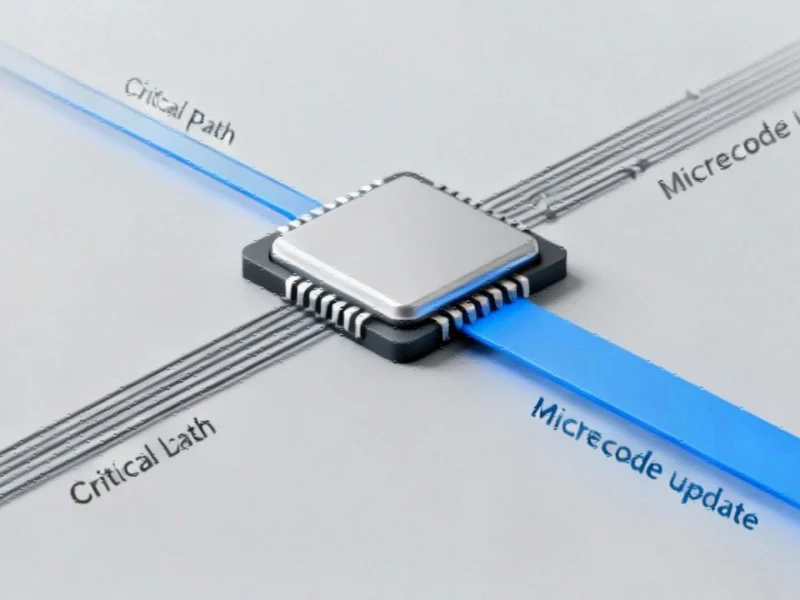Note: Featured image is for illustrative purposes only and does not represent any specific product, service, or entity mentioned in this article.
Apple’s M5 Chip Delivers Groundbreaking Single-Core Performance
In a remarkable development for computing technology, Apple’s newly announced M5 chip has demonstrated what appears to be the highest single-core performance ever recorded in the Geekbench 6 database. The leaked benchmark results reveal a staggering single-core score of 4,263, significantly outpacing even the most powerful competing processors currently available.
The benchmark data, uploaded on October 17, showcases the M5’s substantial performance leap over its predecessor. Compared to the M4 chip’s capabilities, the M5 represents one of the most significant industry developments in processor technology we’ve seen in recent years. This performance breakthrough comes at a time when computational demands across sectors continue to intensify.
Comparative Performance Analysis
When placed alongside current market leaders, the M5’s single-core performance stands in a class of its own. The chip outperforms the M4 Max (3,914 points) by approximately 9% and dominates AMD’s Ryzen 9 (3,399 points) by an impressive 25% margin. This level of single-core supremacy suggests Apple has made fundamental architectural improvements that extend beyond mere clock speed enhancements.
The multi-core performance is equally impressive, with the unconfirmed test recording 17,862 points—approximately 20% faster than the M4 chip found in current MacBook Pro models. This balanced performance profile indicates that Apple has successfully scaled both single-threaded and parallel processing capabilities, reflecting the company’s continued focus on technological innovation and market leadership.
Technical Architecture and Real-World Implications
The 14-inch MacBook Pro featuring the base M5 chip incorporates a 10-core CPU configuration with four performance cores and six efficiency cores. This architectural approach allows the system to dynamically allocate workloads, maximizing both performance and battery efficiency depending on task requirements.
Single-core performance remains critically important for numerous applications, including gaming responsiveness, application launch times, and overall system fluidity. The M5’s breakthrough in this area suggests users will experience noticeably snappier performance in daily computing tasks. Meanwhile, the substantial multi-core improvement positions the chip as a formidable contender for professional workloads, particularly as we observe storage technology advancing to keep pace with processor capabilities.
Evolutionary Context and Future Prospects
When viewed against Apple’s silicon timeline, the M5 represents the most significant generation-to-generation performance jump since the transition from Intel processors to Apple Silicon. The chip performs approximately equal to the M1 Ultra previously found in Mac Studio systems, demonstrating how quickly mainstream mobile processors are catching up to what were recently desktop-class performance levels.
Industry observers note that Apple isn’t expected to launch the Pro and Max versions of the M5 until early 2026, suggesting that even more powerful variants are in development. This staggered release strategy mirrors Apple’s approach with previous generations, where the enhanced versions typically deliver 20-40% additional performance over the base chips. The current computing infrastructure challenges across various sectors highlight the growing demand for such performance advancements.
Market Impact and Availability
The new 14-inch MacBook Pro with M5 chip is currently available for pre-order with an official launch scheduled for October 22. The timing of this release comes amid significant global economic and political developments that could influence technology adoption patterns worldwide.
For professionals in creative fields, software development, and scientific computing, the M5’s performance profile represents a substantial upgrade opportunity. The single-core advantage particularly benefits applications that haven’t been fully optimized for multi-threading, including certain legacy professional software and development tools.
According to detailed analysis from industry experts, the M5’s performance characteristics could reshape competitive dynamics in the laptop processor market, potentially forcing competitors to accelerate their own development roadmaps. As computational requirements continue to evolve across automation and industrial applications, these related innovations in consumer technology often foreshadow developments in professional and industrial computing sectors.
The M5’s demonstrated capabilities suggest Apple remains committed to pushing the boundaries of what’s possible in personal computing, setting new benchmarks for the entire industry to follow. As the chip reaches consumers hands in the coming weeks, real-world performance validation will determine whether these leaked benchmarks translate into tangible user benefits across professional workflows and everyday computing tasks.
This article aggregates information from publicly available sources. All trademarks and copyrights belong to their respective owners.



